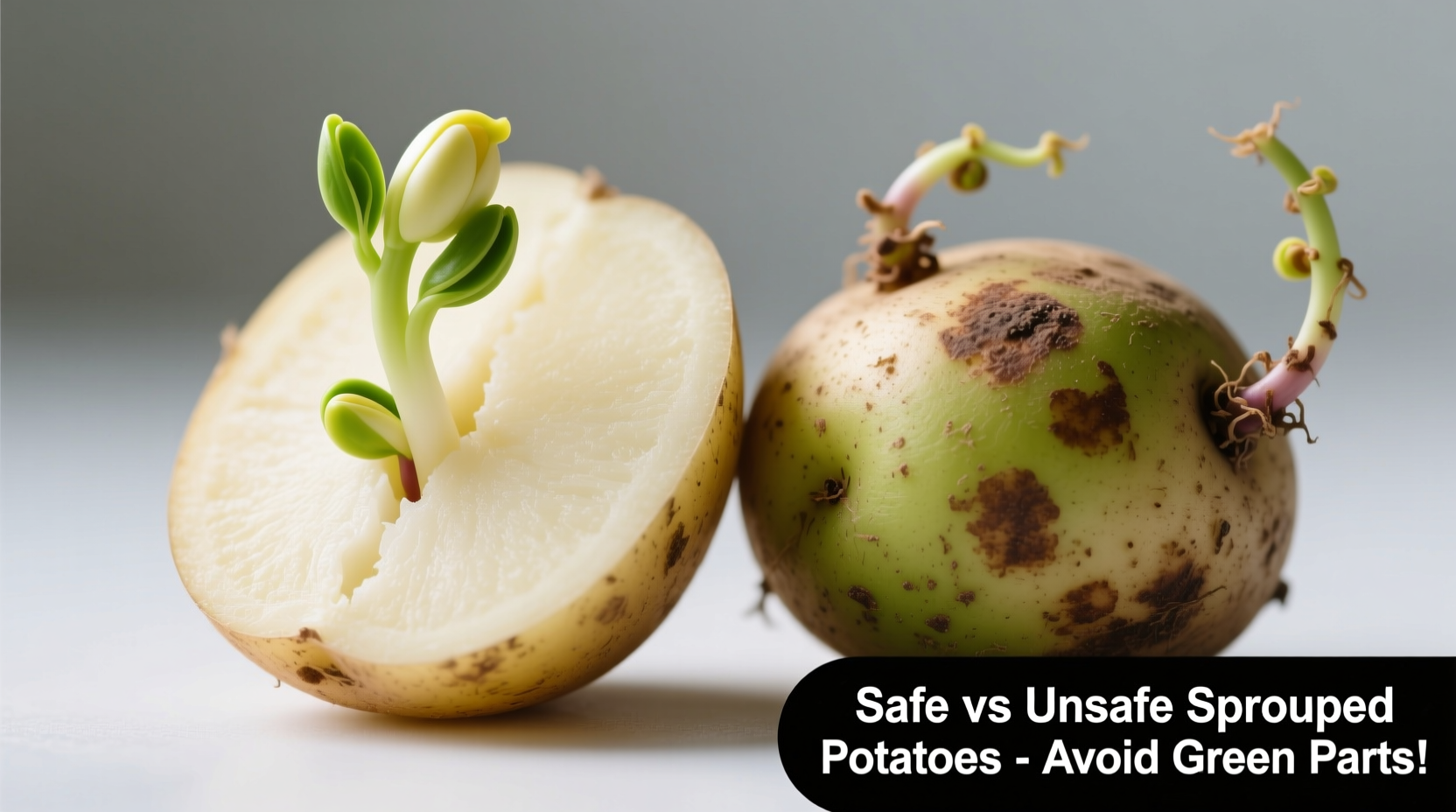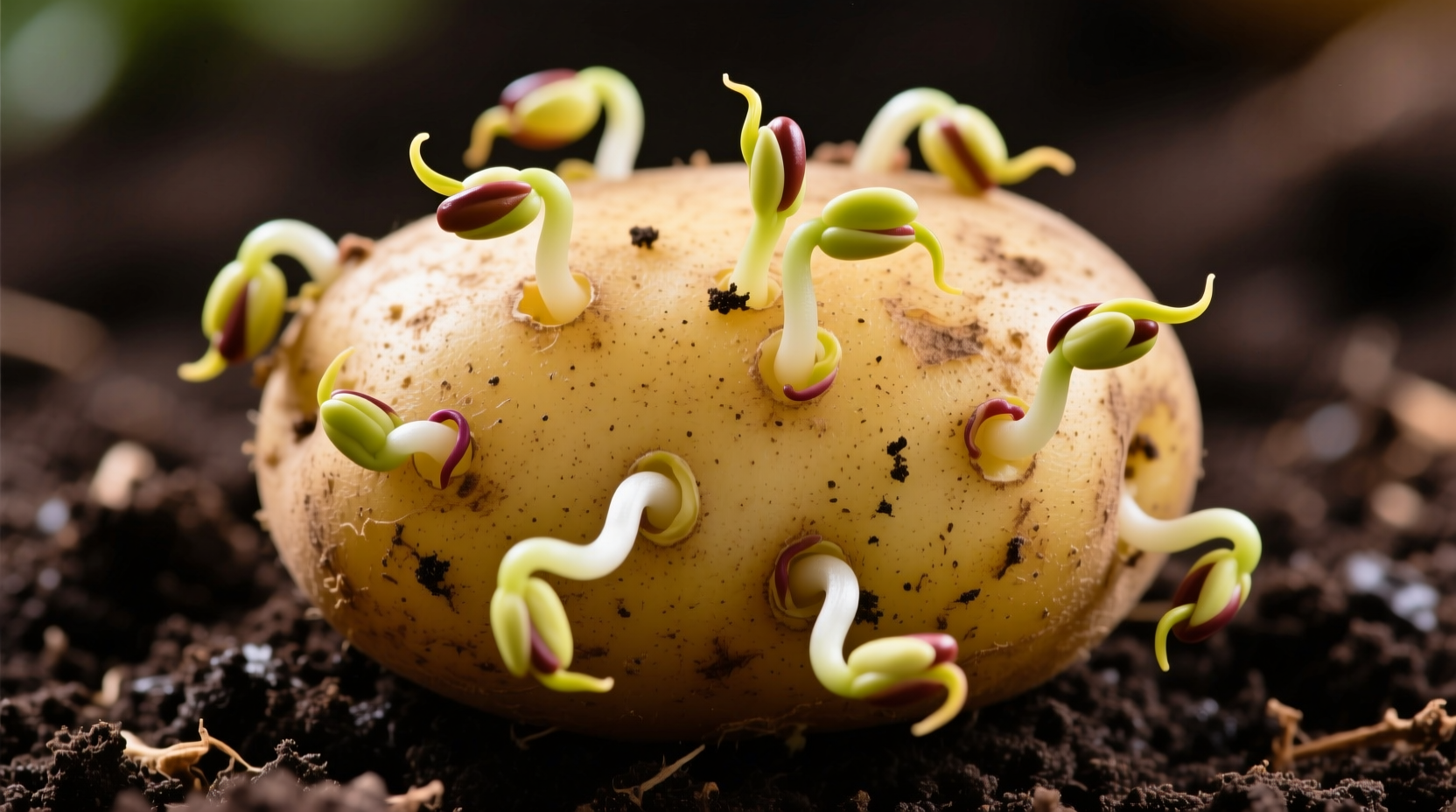Yes, you can eat slightly sprouted potatoes if you properly remove the sprouts and any green areas, but severely sprouted or green potatoes should be discarded due to potentially harmful solanine levels that can cause nausea, headaches, and digestive issues.
Discovering sprouts emerging from your potatoes doesn't automatically mean they've become dangerous. Many home cooks unnecessarily toss perfectly salvageable potatoes every year. Understanding the science behind potato sprouting and knowing exactly when they become unsafe can save you money while keeping your meals safe.
What Happens When Potatoes Sprout?
Potatoes sprout as part of their natural growth cycle when exposed to light and warmth. This biological process triggers chemical changes within the tuber. As potatoes prepare to grow new plants, they convert starches to sugars and produce compounds like solanine—a natural defense mechanism against pests and sunlight.
| Sprouting Stage | Visual Indicators | Safety Status |
|---|---|---|
| Early Sprouting | Small sprouts (under 1 inch), firm texture, no green | Safe to eat after proper preparation |
| Moderate Sprouting | Longer sprouts, slight softening, minimal green spots | Use with caution; remove all affected areas |
| Advanced Sprouting | Extensive sprouting, significant greening, soft/mushy texture | Discard immediately—high solanine risk |
The Science Behind Potato Safety
Solanine, a glycoalkaloid compound, naturally increases in potatoes when they're exposed to light and begin sprouting. This defense mechanism protects the plant but can cause health issues when consumed in significant quantities. According to research from FDA food safety guidelines, solanine concentrations above 200 mg/kg can potentially cause symptoms like nausea, vomiting, diarrhea, headaches, and in severe cases, neurological problems.
Crucially, solanine isn't destroyed by cooking—it remains stable even at high temperatures. This means boiling or baking won't make unsafe potatoes safe to eat. The green color that often accompanies sprouting indicates chlorophyll development, which typically coincides with increased solanine levels.

Your Step-by-Step Assessment Guide
Follow this practical decision-making process when evaluating sprouted potatoes:
- Inspect texture: Firm potatoes are generally safer than soft, wrinkled ones
- Check for greening: Any green areas indicate potential solanine concentration
- Examine sprout length: Short sprouts (under 1 inch) are more manageable than long, established sprouts
- Assess overall condition: Discard potatoes with significant soft spots or mold
Safe Preparation Techniques for Slightly Sprouted Potatoes
If your potatoes show only minor sprouting with no greening:
- Use a sharp paring knife to remove sprouts completely, digging slightly beneath the "eye" where sprouts emerge
- Cut away any green areas with a generous margin (about 1/4 inch around affected zones)
- Peel the entire potato to remove surface compounds
- Soak cut pieces in cold water for 15-20 minutes before cooking
- Cook thoroughly using your preferred method
Remember that potatoes with extensive sprouting or significant greening should never be consumed, regardless of preparation method. When in doubt, throw it out—your health isn't worth the risk of solanine poisoning.
Preventing Potato Sprouting: Smart Storage Solutions
Proper storage dramatically extends your potatoes' shelf life and prevents premature sprouting:
- Store in a cool, dark place between 45-50°F (7-10°C)—never in the refrigerator
- Use breathable containers like paper bags or mesh sacks instead of plastic
- Keep away from onions, which release gases that accelerate sprouting
- Maintain humidity around 85-90% to prevent drying out
- Check stored potatoes weekly and remove any showing early sprouting
According to University of Minnesota Extension research, properly stored potatoes can remain sprout-free for 2-3 months. Avoid washing potatoes before storage, as moisture encourages decay and sprouting.
When Sprouted Potatoes Become Dangerous
Understanding the progression from safe to unsafe is critical for food safety. The Centers for Disease Control and Prevention notes that while rare, solanine poisoning typically occurs when consuming potatoes with visible greening and advanced sprouting. Symptoms usually appear 8-12 hours after consumption and may include:
- Nausea and vomiting
- Stomach cramps and diarrhea
- Headache and dizziness
- In severe cases: neurological symptoms like confusion or vision problems
Children are particularly vulnerable to solanine toxicity due to their smaller body mass. If you suspect solanine poisoning, seek medical attention immediately.
Frequently Asked Questions
Can cooking destroy solanine in sprouted potatoes?
No, solanine is heat-stable and cannot be destroyed through cooking methods like boiling, baking, or frying. Removing affected areas before cooking is essential for safety.
How much sprouted potato would cause solanine poisoning?
The toxic dose varies by individual, but consuming 2-5 mg of solanine per kilogram of body weight may cause symptoms. A severely affected potato can contain 500-1000 mg of solanine per kg, making even small portions potentially dangerous.
Are sweet potatoes safe to eat when they sprout?
Yes, sweet potatoes behave differently than regular potatoes when they sprout. The sprouts are actually edible and the tuber remains safe to eat as long as it's firm and shows no signs of decay. Simply remove any sprouts before cooking.
Can I plant sprouted potatoes from my pantry?
Yes, pantry-sprouted potatoes can be planted, though they may not produce as well as certified seed potatoes. Allow sprouts to grow to 1-2 inches, then plant in well-draining soil. Note that grocery store potatoes are sometimes treated to inhibit sprouting, which may affect growth.











 浙公网安备
33010002000092号
浙公网安备
33010002000092号 浙B2-20120091-4
浙B2-20120091-4